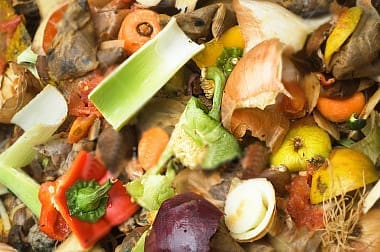On average, 30 to 40 percent of food in the United States is never eaten. Sharolyn Jackson is a family and consumer sciences specialist with K-State Research and Extension’s northeast area office. She says most of that food goes to waste.
“That is food that is either discarded, or just gets thrown out and ends up in landfills or down the drain in the sewer system, or about 4% of it is composted,” said Jackson.
Put simply, food that goes uneaten is money thrown away. Jackson said that an average family of four spends about $3,000 per year on food that’s not eaten.
“That’s a huge number,” she said. “It’s about $56 a week that your family of four could save, and I can think of a lot of things to do with an extra $56.”
Jackson said consumers can cut down on food waste by planning their purchases more carefully.
“Sometimes we see a sale at the store and we stock up, but then our plans for that food change,” she said. “Or you have food sitting at home that never was part of a meal plan. Or our schedules are unpredictable at times. There are a lot of things that go into using our food.”
Knowing what foods are on hand forms the basis for a shopping list. Jackson said to use food items that you’ve had the longest and plan some meals around those items. She also said to freeze leftovers individually for a grab and go meal when you don’t have time to cook.
Jackson shared some additional tips to save money on food costs:
- Shop with a list. “It’s pretty easy to buy on impulse, but you need to stick to your list,” Jackson said. If certain meats are higher priced currently, look for alternative meats that would substitute well in planned meals. Planning your meals for the week forms the basis for your grocery list.
- Think about portion size. Jackson said consumers often think of restaurant meals as a guideline for portion size, but in reality, many prefer smaller portions. Consider the portion sizes that you and your family prefer when buying foods at the store.
- Re-purpose foods for additional meals. “Sometimes you’ll have maybe just a spoonful of veggies that is left after a meal,” Jackson said. “You can keep a container in your freezer when you accumulate those small portions and make a soup once you have enough of those.” Leftover broth from chicken or turkey is also an ingredient that can be frozen and used later.
- When buying fresh, consider its shelf life. Fruits and vegetables are in abundance in spring and summer, but Jackson cautions consumers to buy only what they can use in a realistic timeframe. Freezing or canning certain foods is an option.
If storing food isn’t possible, Jackson recommends donating it to a local food pantry. She pointed to a successful example from the Food and Farm Council in Riley County, where she lives.
“In the past year, we’ve rescued more than 35,000 pounds of food,” she said, noting that most food donations come from caterers and restaurants, but also from individuals and local farmers at the farmers market.
“We have a pretty sophisticated system in place to capture that food before it gets to a landfill, and it helps people in need.”
More information on saving money and eating healthfully is available at local extension offices in Kansas.













